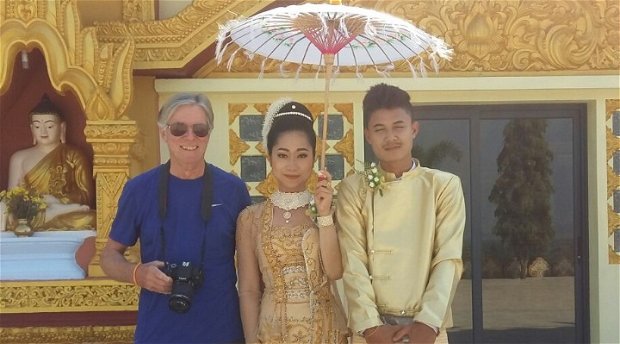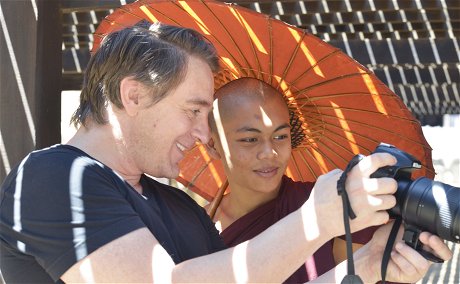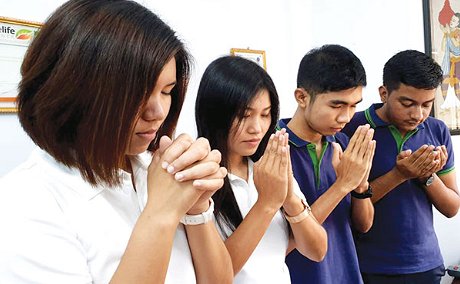October 2023 Newsletter: Greetings to our friends across the world and sharing some latest Myanmar Travel Related News.
The Exotic Myanmar Wedding

One of the most amazing things about our world is how the same action or tradition can be implemented so differently across cultures.
Take marriage for instance; it is practiced around the world, but the way a wedding is celebrated varies immensely across cultures. All over the world, weddings are rituals which join together two people - a man and woman coming of age and coming to love one another, and choosing to marry and live happy ever.
There are many different ways of wedding around the world. Not all weddings in every country are the same, and not everyone follows these traditions to tee. In any case, the way we each take something like a wedding and make it our own is quite special.
Wedding customs in Myanmar vary according to ethnic groups. Countries like Myanmar have many, many different kinds of wedding ceremonies due to having many different ethnic groups within the country. Myanmar wedding ceremonies may also be simple or elaborate, depending on the family’s financial status.
Other factors may also influence the long-term success of the match. Some elders believe that those born on particular combinations of days of the week are not suitable for one another. Saturday-born and Thursday-born; Friday-born and Monday-born; Sunday-born and Wednesday-born; Wednesday-evening-born and Tuesday-born are all poor combinations, according to traditional beliefs, and some families take these warnings seriously.
Nowadays, people prefer to celebrate their wedding ceremonies elaborately and uniquely among their community. Some couples sign the marriage certificate at a courthouse, celebrate at the hotel and some invite a judge to their home. Generally, monks are invited to home in rural areas. In metropolitan areas, families go to monasteries whereby the couple offers food to the monks and listens to a sermon.
Here is an example of a very simple village wedding in Myanmar. As marrying is a once-in-a-lifetime occasion, Myanmar women regard the wedding ceremony very seriously and you can be sure the bride will be having cold feet, butterflies in her stomach and perspiration on her forehead as she faces this very special day of her entire life.
Most Burmese people find their own life partner but sometimes they may have an arranged marriage conducted by their parents or a middleman. Traditionally, when a man goes to ask a woman’s parents to bless their marriage, he brings a gift to his future wife. After that, both parents arrange a marriage ceremony at a monastery or at the bride or bride groom’s house and build a MANDAT (PANDAL).
On the Wedding day, Buddhist families will invite monks (members of the SANGHAS) and listen to their sermons at the PANDAL. The offering of soon to the Buddhist Monks is called ‘MINGALAR Soon’ (food offered to monks to bless a marriage).

The village headman leads the marriage ceremony and pronounces the couple as husband and wife, in the presence of both parents, relatives, honourable guests and friends whom are invited, so that they will be recognized as a newly married couple.
On this day of matrimony, it is a customary for the bride's family—parents, brothers and sisters—to dress her up in the finest of attire and bedeck her with the best jewelries they can afford. The bride is pretty and quite attractive with beezadoun (knotted hair) on her head. Her beezadoun is adorned with flowers, diamond hairpins and diamond comb. She wears valuable HTAIN MATHEIN INGYI (hip length jacket) and silk or BROKADE HTAMANE (skirt or sarong). She also wears jewelry on her neck and diamond bracelets on her hands. Her face is painted with a high quality make-up. The bridegroom wears Myanmar silk jacket, LONGYI and velvet slippers. The bride’s friends tease her and praise her newly wedded life.
It is customary for the friends and relatives who attend the nuptial ceremony to shower the couple with gifts such as household items and personal affects that will help the marrying couple get on their feet with their life-long journey. Parents of the bride and bridegroom heartily welcome their guests with smiles and handshakes.
On the wedding stage, the bridegroom and bride are seated on the cushion, parents sprinkle drops of scented water on their heads, recite a few words of blessing, place the wedding garland on their necks and put wedding rings on their fingers. A music troupe organized by the villagers entertains the invited guests with Myanmar classical songs or folk songs.

After the wedding rituals are completed, the guests are treated to refreshments offered by the couple. A large crowd of invited guests in the village gather at the PANDAL and are served abundantly with HTAMIN (cooked rice), pork and chicken curries, sour flavoured thin soup, boiled or pickled vegetables and a sauce of fish paste. The married couple warmly greets and thanks the guests who have attended their wedding. The guests in return bestow on the couple their best wishes for prosperity and a long and happy married life! The cameramen are busy with the work of recording the whole wedding ceremony with their cameras and video cameras.
A woman among their relatives came out from the audience and scatters coins and popcorn from the silver bowl on the audience just to let them know the successful ending of the marriage ceremony. A group of local young men or village lads ask for pocket money which is customarily given on the occasion of a marriage.

After rituals, a buffet of Htamin (Cooked Rice) and many kinds of Curry are served in abundance.
After the wedding ceremony, when the married couple arrives home, they pay their respects to parents of both sides according to traditional Buddhists customs. In turn they are blessed by their parents. Polygamy is illegal in Myanmar however divorce is common. A couple who wants to divorce will divide their property. After marriage, a couple may live with their in-laws for a short time or for a lifetime.
Further Reading
From the wood of a small tree in Myanmar, Thanaka has been used for over 2000 years by Myanmar people to protect and beautify the skin. Thanaka paste is used as an astringent, antiseptic, antifungal, anti-aging, cosmetic and sun protective product. It is all natural products and has no side effect and is completely painless in application. Thanaka is the most ecological solution due to it’s regenerative nature and can be grown...









Share This Post